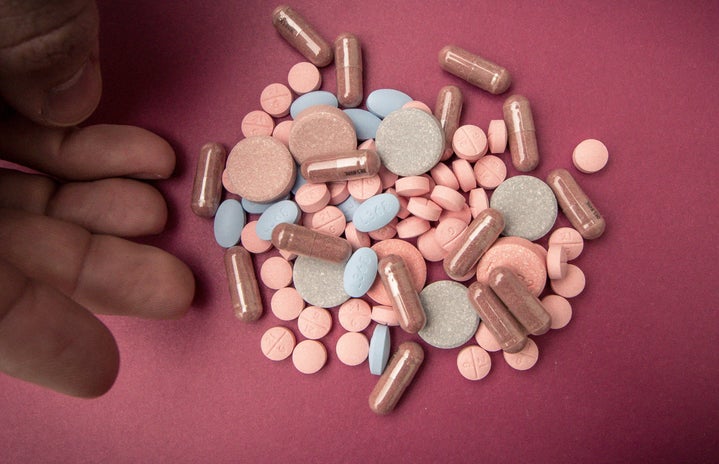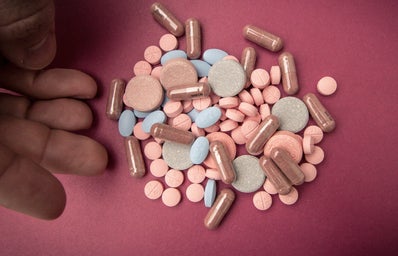As the surge of the opioid epidemic* continues to plague the U.S., opiates are becoming readily available to many university and college students on their campuses. Whether students elect to make use of the “dark” or “deep” web to supplement self employment, or lack knowledge in regards to pharmacology and the drug realm, opiates can be dangerous regardless. The danger is not only the biological susceptibility to benzodiazepine addiction, but the way in which most drugs are composed can be “cut” with fentanyl. Despite said dangers, there lay an appeal of expanding the list of drugs that people have experimented with, thus attributing to the increasing number of college students participating in “self study experimentation”.
Due to the financial ease for college students that accompanies Xanax on the black market, with generic or drugs of similar types to Xanax, i.e. Etizolam or Alprazolam, being available for “dirt cheap” prices, it is the first opioid most students are being exposed to. Xanax, when prescribed by medical professionals, is usually to target extreme cases of anxiety and or panic and normally is paired with an antidepressant, if applicable to the patient’s individual case. For patients intended to use the substance, it has a sedative, mind relaxing effect on the body. Mentally, Xanax can deter focal abilities while remaining sedentary or occurrences of mental stimulation some users have reported. The emotional change exposes the original intention of the drug; users become very indifferent to any potential threats of negativity around them. Motor skills may be slowed or difficult to perform properly; activities such as maintaining coherent conversations and walking in a straight line may pose difficulty for those under a non-prescription dose.
Xanax can be dosed by dealers in tablet or liquid form, there are other methods such as powders, yet these remain somewhat unpopular amongst the college student demographic. For anyone contemplating purchasing and trying any of the substances (xans, etizolam, or alprazolam, etc.) listed above it is best to understand dosage, best method of ingestion for benzodiazepines, or thienodiazepines like Etizolam, and the variable Xanax bar colors.
In terms of dosage, there is a lot of language and specific terms involved, that without knowledge of, would expose a client as a first time user. Though this may seem unworthy of concern, most first time users, like with any illegal substance, will be overcharged and threatened by being sold illegitimate placebos or alternative drugs due to lack of recognition. For benzo-virgins it is best to recognize these two terms when dabbling in Xanax: a “bar” and “football.” A bar of Xanax can range in colors, but normally remains rectangular in shape with divets to separate the milligrams of the bar into increments. A typical white, rectangular bar of Xanax is two milligrams; a “football,” or half of a bar, is then approximately one milligram. If a dealer is “dosing in liquid,” it means they are offering the substance in a liquid form, typically clear in color mimicking the appearance of water. The dangers of liquid dosing involve being given a different substance, not recognizing the difference in physical attributes, and overdosing accidentally. It is absolutely vital to never ingest more than one bar, or four milligrams, of Xanax or after taking one bar, do not redose. Benzodiazepines impose a chemical effect on the brain that causes users to convince themselves they need to redose after coming down, thus leading to addiction. Therefore, always ask any pill dealer for the miligram of the Xanax bar and after one dose, do not readminister it without the instruction of a medical professional.
Taking benzodiazepines is fairly self-explanatory given most of them come in a pill or tablet form, making it as simple as taking an aspirin. In terms of liquid doses, some users report mixing it into foods such as puddings, apple sauce, or yogurt; supplementing the drug with food allows for the body to extend time in the chemical breakdown which slows the drug’s journey through one’s body. Users have reported that, occasionally, and depending on dosage, they endure stomach aches and pains until the drug is fully absorbed. Vomiting, pains, and loss of appetite may be common when solely drinking the liquid compound which is accompanied by a chalky aftertaste and accelerated effects. For first time users, in the case of a liquid dose, should then certainly take into consideration ingesting the substance through a medium—the medium being food.
Bars of Xanax can come in, at minimum, seven varying colors, shapes, and doses.
-
Green, three sided, 3 mg
-
White, rectangular, 2 mg
-
Yellow, rectangular, 1 mg
-
Blue, oval (coined “footballs” for their shape and mg), 1 mg
-
Orange, oval, .5 mg
-
White, five-sided, .5 mg
Though the colors and shapes of bars can identify the amount of milligrams in each bar, different big-pharma companies produce Xanax can vary in the dosage of each pill despite the commonly associated amount with colors/shapes. Good rule of thumb: (usually) white, 2mg bars are bigger in size than other bars of Xanax. Despite visually recognizing the differences in each bar or football, it is impertinent to test all recreational drugs as they could be pressed (compounds and powders shaped into pills) by companies or people not under the supervision of pharmaceutical instruction.
Fentanyl is typically used to alleviate the pain of cancer patients who require heavy doses of opiates daily and affects the way in which the body responds and senses pain. “Cutting” recreational drugs with fentanyl has become a plague in the opioid crisis as the epidemic has continued to thrive. Cutting a drug, even drugs such as cocaine, involves imposing on them substances that are not normally in their chemical composition and normally will pose dangers to users who purchase “cut” drugs unknowingly. This surge can be accredited to the accessibility to the four ingredients to make fentanyl that are nonprescription and available to a wide spread population. Fortunately, through the use of test kits, users are able to avoid a fatal mistake such as consuming copious amounts of fentanyl. Fentanyl kits are extremely user friendly and simple to use which is why it is important to test all black market purchased drugs (especially benzos, heroin, and meth).
How to use the kit:
-
Fill a small, disposable cup with thirty milliliters of water and remove the test strip from the packaging.
-
Dip a fine point object, such as tweezers, into the cup of water.
-
Using the wet, fine pointed object, extract approximately one grain of the substance.
-
Return the tweezers, with the substance on it, to the water.
Being cautious during step four. It is pivotal as it is possible to trigger a false negative by releasing too much of the substance into the thirty milliliters of water.
-
Remove the test strip from the package, only allowing flesh contact on the blue side portion.
-
Gently move the cup in a small circular motion to ensure the grain is absorbed.
-
Douse the test strip in the cup of water, only going up to the light blue line, for fifteen seconds.
-
Remove the strip from the water and lay it horizontally on a sterile surface.
Test strip results are explained on the back of each box, seeing as tests can vary in the appearance or absence of fentanyl. The normal determination of fentanyl in a substance is dictated by one line on the strip. A negative test will show two red-pinkish colored lines on the test strip. If the Test strip results with no lines that means it was a failed test, and the user must retest the substance before consuming it.
Some students may choose to participate in drug use for their personal enjoyment or experimentation on how their bodies react to foreign chemicals. Though drug use inherently has these risks, it is best to remain educated whether or not someone chooses to associate with these substances as the risk of being drugged or interacting with someone who has unwillfully taken something continues to increase. Therefore, recognizing the mental effects and bodily reactions to substances, such as Xanax, promotes healthy progression in society, and on campuses, leading towards a culture of rehabilitation and safe opiate use amongst a wide scale population, not solely limited to the gates of college campuses. Stay informed. Stay Safe.
*If you or someone you know is struggling with addition, please reach out to the Substance Abuse and Mental Health Services Administration’s (SAMHSA) helpline: 1-800-622-HELP or 1-800-622-4357.


